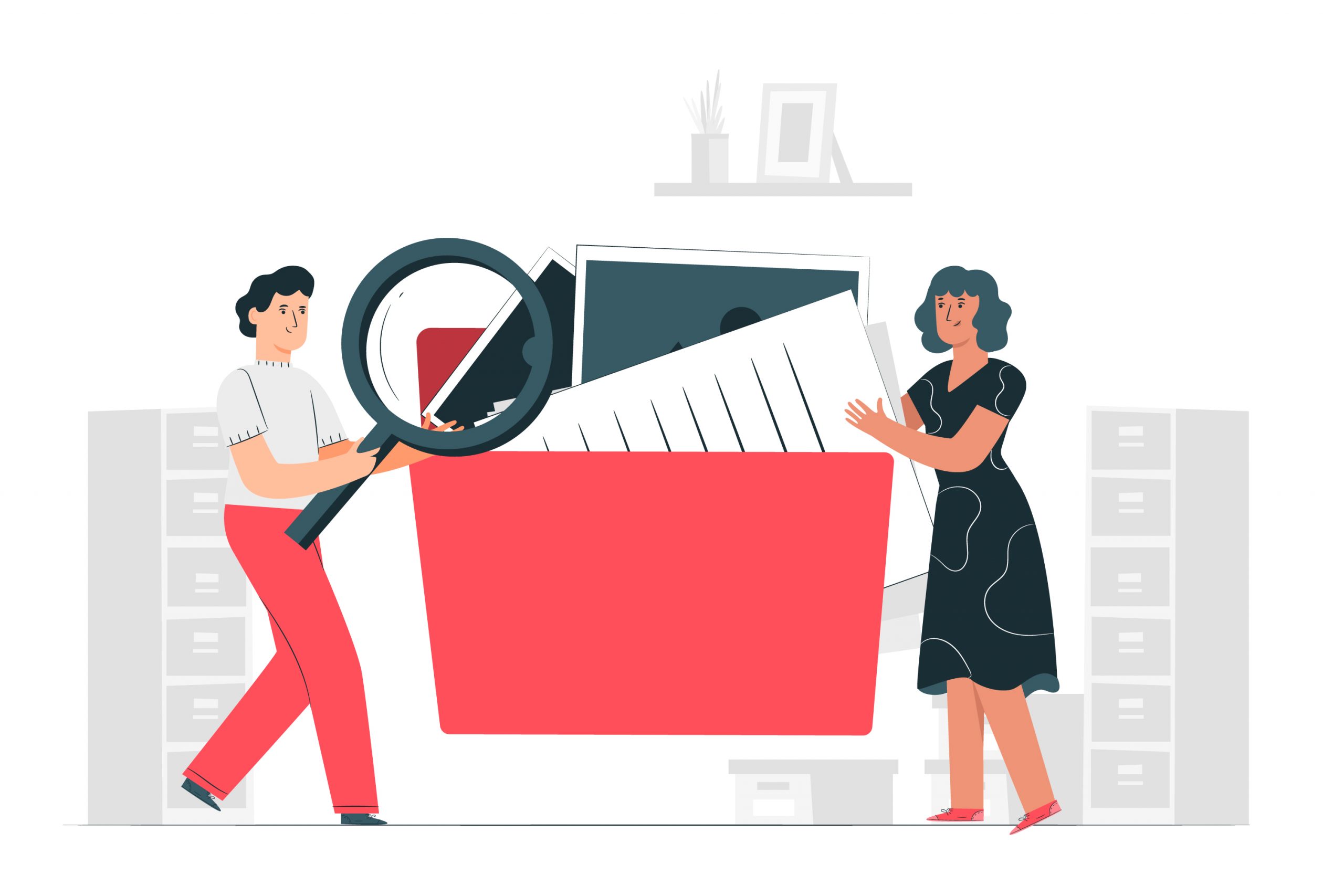Home Decor
The Benefits of Native Plant Gardening in London: Supporting Local Ecosystems and Wildlife

London, a sprawling urban metropolis, boasts an incredible amalgamation of history, culture, and modernity. But amidst the concrete and iconic landmarks, there’s a growing movement that brings a touch of wild Britain back to the heart of the city: native plant gardening. This eco-friendly gardening method focuses on cultivating plants indigenous to the UK, fostering local ecosystems, and supporting native wildlife. Here’s why Londoners should embrace native plant gardening:
Why Native Plant Gardening Matters in London?
In the bustling heart of London, amidst skyscrapers and busy streets, the significance of native plant gardening shines brightly. London’s rapid urban growth means green spaces are not just a luxury but a necessity for the well-being of its residents and local wildlife. Choosing native plants ensures these green oases are more than just decorative; they serve as vital lifelines for bees, birds, and butterflies native to the British Isles.
Furthermore, with London’s unique climatic challenges, native plants, being naturally attuned to local conditions, thrive with minimal intervention. These gardens, therefore, become pockets of resilience and sustainability in the urban landscape. By prioritizing native plant gardening, Londoners not only beautify their surroundings but also actively contribute to the city’s ecological and cultural preservation.
Benefits of Native Plant Gardening in London
1. Helping Local Plants and Animals Thrive
London’s gardens can become homes for many local plants and animals. When gardeners choose to plant things like bluebells, foxgloves, or wild roses, they’re picking plants that have been in the UK for a very long time. These plants are special because they can feed and protect local bugs, birds, and animals. Think about bees, butterflies, and birds that sometimes find it hard to get food in a city. These gardens offer them a place to eat and live.
2. Easy-to-care Gardens that Help the Earth
There’s something great about plants that come from the UK: they’re used to the weather and the soil in London! This means they don’t need too much water or special food to grow well. And the best part? Gardeners don’t have to work too hard to take care of them! Also, because these plants are used to the area, they don’t need chemicals to keep away bugs or diseases. This is good for the earth because fewer chemicals are better for nature.
3. Keeping Soil Strong and Saving Water
A special thing about local plants is their deep roots. These roots do an important job. They hold the soil tight, so it doesn’t wash away when it rains a lot. This helps in stopping floods. Also, the deep roots let water go deep into the ground. When it rains, the water doesn’t just stay on top; it goes down and fills up the underground water sources. This is good because it means there will be more water for people to use later on.
4. Reconnecting with London’s Roots Through Plants
Planting gardens with local plants is like taking a trip back in time for many Londoners. Every plant has its own story about the land and the animals that lived here long ago. When people in London choose these plants for their gardens, they’re not just growing flowers or trees. They’re remembering and celebrating the history and stories of the UK. It’s a special way to feel close to the past and keep the memories of the British Isles alive.
5. Tough Plants that Don’t Need Chemicals
One of the great things about local plants is that they’ve been in the UK for a very long time. During this time, they’ve learned how to deal with bugs and sicknesses that might hurt them. This means they’re tough and can handle these problems on their own, without needing lots of chemicals. For gardeners, this is good news! They can have beautiful gardens without using things that might be bad for the environment. Plus, there’s less worry about bugs or diseases ruining their plants.
6. Beauty in Every Season
London gardens can be beautiful all year round, thanks to the many different plants from the UK. These plants don’t all bloom at the same time. Some give lovely flowers in the spring, like the snowdrops that pop up when it’s still chilly. Others show off their colors in the summer or turn the garden into a world of golden and red leaves in the autumn. So, with some planning, a garden in London can look amazing in every season, giving something beautiful to look forward to all year.
7. Helping Local Businesses and Nature
When people in London decide to grow local plants in their gardens, they do more than just make their yards pretty. They can buy these plants from local nurseries and farmers who grow them. This helps these small businesses and also helps the local workers. It’s like giving a boost to London’s own economy. Plus, buying and growing local plants is like voting for them to stay around for a long time. It tells everyone that these plants are important and should be taken care of.
Conclusion
as London continues to grow and evolve, the importance of preserving its natural ecosystems cannot be overstated. Native plant gardening offers a sustainable, beautiful, and rewarding way for Londoners to reconnect with nature, support local wildlife, and make a positive environmental impact right in their backyards.
FAQs
Native plant gardening is a practice where gardeners choose to cultivate plants that naturally belong to a particular region, like the UK in this instance. Unlike plants imported from abroad, these native varieties have evolved and thrived in the local environment for centuries. This means they’re naturally in tune with the UK’s seasons, weather patterns, and soil types, making them an integral piece of the region’s biodiversity.
Embracing native plant gardening in London is a sustainable choice for several reasons. Firstly, these plants have evolved to thrive in London’s unique climatic conditions, ensuring their resilience against local weather extremes. This adaptability means they can flourish with what nature provides, reducing the necessity for artificial interventions. Additionally, by cultivating native plants, you’re offering a sanctuary for local wildlife. Birds, insects, and other creatures often have strong symbiotic relationships with native flora. Beyond this, using native plants can decrease the reliance on chemicals, which in turn protects the environment and promotes a healthier garden ecosystem.
Absolutely, native plants inherently understand their environment better than introduced species. Having evolved in London’s particular conditions, they are naturally equipped to handle its weather variations and potential threats from local pests. This intrinsic toughness means they often demand less water, fewer fertilizers, and minimal pesticides, if any. For gardeners, this translates to a garden that’s not just beautiful but also significantly easier and more cost-effective to maintain, making native plant gardening a win-win choice.
Native gardens act as lifelines for local wildlife in several ways. First, these plants have co-evolved with the region’s fauna, ensuring they offer the right kind of nourishment and shelter. For example, certain native plants produce nectar precisely tailored to local bee or butterfly species. Birds might find the perfect materials for their nests or seeds that are particularly nutritious. By cultivating a garden filled with native plants, you’re essentially setting up a natural buffet and sanctuary, ensuring that local wildlife, especially in urban settings like London, have places where they can feed, rest, and thrive.
Yes, you absolutely can, and it’s a popular approach many gardeners adopt. Introducing non-native plants can add a splash of unique colors, shapes, and textures to your garden. However, while native plants play a vital role in supporting local ecosystems, non-native plants can introduce a level of diversity and intrigue. It’s essential, though, to research and ensure that any non-native additions aren’t invasive or harmful to the local environment. Invasive species can out-compete, and even displace, native plants, disrupting the balance of the ecosystem.
London boasts a range of nurseries, garden centers, and plant sales that prioritize native species. It’s a growing trend as more Londoners recognize the benefits of native plant gardening. When shopping, always enquire about plants indigenous to the UK. Not only does this support local ecosystems, but buying from these nurseries also helps sustain businesses that are committed to environmental preservation. Furthermore, joining local gardening clubs or attending plant swaps can be a fantastic way to source native plants and gain insights from fellow gardening enthusiasts.
It’s a misconception that native plants might invite an unwelcome swarm of pests. In reality, these plants have shared their space with local pests for centuries, making them naturally equipped to fend off or coexist with these creatures. Moreover, native gardens often attract beneficial wildlife, such as birds and predatory insects. These natural allies help maintain a balance by preying on potential pests, ensuring that no single species becomes too dominant or problematic. Thus, while you might observe an increase in certain insects, it’s all part of a thriving, balanced ecosystem that keeps potential nuisances in check.
Native plants are ecological superheroes for gardens in several ways. Their roots, often longer and deeper than non-native species, play a vital role in stabilising the soil, and reducing erosion, especially during heavy rains. These robust root systems create pathways that enhance water permeability, ensuring better water absorption and reducing surface runoff. This mechanism not only conserves water but also ensures that the soil remains nutrient-rich and aerated. Over time, you’ll notice healthier soil structure and improved water retention, making your garden more resilient to both droughts and heavy rainfall events.
The beauty of the UK’s diverse native plant portfolio is its ability to showcase a symphony of colors, textures, and fragrances throughout the year. From the delicate blossoms of snowdrops in the early spring, vibrant bluebells in late spring, to the golden hues of meadow grasses in the summer and the rich, fiery tones of autumn foliage — there’s always something in bloom or displaying beauty. With thoughtful planning and selection, gardeners can ensure that as one plant completes its bloom cycle, another begins, providing a continuous visual and sensory feast every season.
London, with its rich gardening heritage, offers numerous avenues for aspiring gardeners to learn about native plant cultivation. Local gardening clubs are treasure troves of knowledge, bringing together seasoned experts and enthusiastic novices, all bound by a love for plants. Joining such a club can give you access to monthly meetings, guest speakers, and hands-on workshops tailored to native species.

Home Decor
Keep the Heat On: Why November Is the Smartest Month for Boiler and Heating Checks

As the nights draw in and the temperature drops, it’s officially boiler season. November is when many households across the UK switch their heating back on for the first time in months and realise something’s not quite right. Maybe the radiators are slow to heat up, the water’s lukewarm, or the boiler makes a strange noise.
That’s exactly why November is the best time to arrange a boiler service and make sure your heating and hot water system is ready for winter. A quick check now can prevent breakdowns, improve efficiency, and keep your home warm when you need it most.
Why November Is the Perfect Month to Book
1. The Weather’s Cool but Not Freezing Yet
November sits in that ideal middle ground between mild autumn and freezing winter. Engineers tend to be easier to book, and you can have your system checked before demand peaks. Once December hits, call-outs start to surge, and getting an appointment can take longer. Taking care of it now means you’ll be prepared for the colder weather ahead.
2. Catch Problems Early
During summer, your boiler spends months barely ticking over, providing only hot water. That downtime might seem harmless, but it can allow parts to seize or minor faults to develop unnoticed. When the heating finally comes back on, those little issues often turn into sudden faults.
A check in November helps to identify problems like low pressure, sticky valves, or weak pumps before they cause bigger headaches. It’s the perfect time to give your boiler a quick health check so it can run reliably all winter.
3. Improve Efficiency and Lower Energy Bills
An efficient heating system can make a noticeable difference to your energy costs. When a boiler is properly maintained, it doesn’t need to work as hard to reach the same temperature, which means it uses less gas. During a routine visit, the engineer will test performance, clean the internal parts, and make sure everything’s running as efficiently as possible.
Even simple adjustments, like balancing radiators or topping up pressure, can help your heating work faster and more evenly. A well-maintained system also produces less wear on parts, reducing the chance of breakdowns later in the season.
4. Keep Your Home and Family Safe
A yearly check isn’t just about comfort, it’s also about safety. Boilers that haven’t been serviced in a while can become a hidden hazard, particularly if the flue, seals, or ventilation aren’t working as they should. A trained engineer will inspect these areas carefully and test for carbon monoxide leaks.
Carbon monoxide is invisible and odourless, so prevention is key. Making sure your system is running safely gives peace of mind that your home is protected all winter.
5. Keep Your Warranty and Insurance Valid
It’s easy to forget that most boiler warranties depend on regular servicing. If you skip a year, your cover could lapse without you realising. The same is true for many home insurance policies, which often expect proof of maintenance. Booking your annual service in November helps you stay on top of both, so you’re not caught out if something does go wrong later.
Keeping a simple service record is a smart habit that protects both your warranty and your wallet.
What’s Included in a Professional Check
If you’ve never seen what happens during a boiler inspection, it’s simpler than you might think. A professional engineer will:
- Inspect the boiler and surrounding pipework for leaks or corrosion
- Check the flue to make sure it’s safely removing waste gases
- Clean the burner, heat exchanger and ignition components
- Test safety controls and carbon monoxide levels
- Confirm the correct gas pressure and overall performance
The whole process usually takes under an hour, but it can make a big difference to the way your system performs throughout winter.
Simple Checks You Can Do Yourself
You don’t need to wait for an engineer to do a few quick checks around the house:
- Look at the pressure gauge; it should read between 1 and 1.5 bar when cold, or within the green zone if your boiler uses colour indicators.
- Bleed radiators if they have cold spots to remove trapped air
- Turn your heating on for a short while to make sure everything is working smoothly
- Check for any leaks or damp patches around visible pipework
- Listen for any rattling or whistling noises that might indicate trapped air or sludge
These small steps can keep your system running efficiently and help you spot potential issues early. If something seems unusual, note it down and mention it when you book your boiler service.
Why an Annual Check Makes Sense
Booking a service each year has long-term benefits. It helps you avoid the inconvenience of a sudden breakdown, but it also improves overall system performance. Regular maintenance keeps parts moving freely, improves safety checks, and ensures your boiler runs efficiently, which can lower energy consumption over time.
A well-looked-after system can last several years longer than one that’s neglected. It’s also better for the environment, as efficient heating uses less energy and reduces emissions.
Don’t Wait for the Cold Snap
It’s easy to delay a boiler check until something stops working, but by then you’ll be competing with everyone else for appointments. November gives you the chance to stay ahead, book a convenient time, and make sure your heating system is fully ready for winter.
A short visit from a qualified engineer now means no unexpected cold mornings, no last-minute panic, and a warm, comfortable home for the months ahead. It’s a small job that makes a big difference to how your home feels.
Home Decor
How to Choose Strata Painting Services in London

London is home to countless high-rise apartments, office complexes, and historic buildings, all requiring regular upkeep to maintain their charm and durability. One crucial aspect of property maintenance is strata painting, which ensures interior and exterior shared spaces remain visually appealing and well-protected.
Unlike standard painting jobs, strata painting involves special coatings, weatherproofing, and compliance with strict safety regulations to meet the needs of multi-unit buildings.
With London’s frequent rainfall, pollution, and varying architectural styles, choosing a reliable strata painting service isn’t just about aesthetics—it’s about long-term protection and value preservation.
Whether it’s a modern glass-covered skyscraper in Canary Wharf or a centuries-old residential complex in Kensington, the right painting professionals can help enhance curb appeal while ensuring structural integrity.
What Does Mean By Strata Painting?

Strata Painting is a specialized painting service designed for multi-unit properties like apartment buildings, townhouses, and commercial complexes. It ensures that shared areas such as hallways, staircases, lobbies, and exteriors are well-maintained and protected against weather damage.
For instance, in central London, high-rise buildings often require weatherproof coatings to withstand frequent rain and pollution. In contrast, heritage buildings in Westminster may need specialized paints to preserve their original look while complying with heritage protection laws. This makes strata painting essential for maintaining property aesthetics, longevity, and value.
Key Factors of Choosing Strata Painting Services in London

1. Use of Drones for Building Inspections Before Painting
Drones have revolutionized building inspections by providing aerial views of high-rise strata properties, allowing for detailed assessments of structural damage, peeling paint, and moisture penetration. This reduces the need for scaffolding-based manual inspections, cutting costs and improving safety. According to a 2023 study, over 40% of London’s property management firms have integrated drone inspections for maintenance planning, proving its growing popularity in the industry.
2. Use of Biodegradable and Non-Toxic Paints
With stricter UK environmental regulations, London-based strata painting companies are shifting towards biodegradable, non-toxic, and low-VOC (Volatile Organic Compound) paints. These eco-friendly options improve indoor air quality while minimizing harmful chemical emissions. Reports indicate that over 60% of newly developed residential buildings in London now use low-VOC paints to meet sustainability standards.
3. Green Certifications for Environmentally Responsible Contractors
Many strata painting contractors in London seek BREEAM (Building Research Establishment Environmental Assessment Method) and LEED (Leadership in Energy and Environmental Design) certifications to showcase their commitment to sustainability. Buildings with BREEAM-certified painting solutions have been shown to reduce energy consumption by up to 25% annually, making them an attractive option for property developers and management companies.
4. Self-Cleaning and Heat-Reflective Coatings
With London’s variable climate, self-cleaning coatings have gained traction due to their ability to reduce dirt accumulation and grime buildup on painted surfaces. These coatings, often made with titanium dioxide-based formulas, break down organic dirt through photocatalysis. Similarly, heat-reflective coatings help reduce indoor cooling costs in London’s commercial buildings by reflecting UV rays. Studies indicate that heat-reflective paints can lower interior temperatures by up to 5°C, cutting energy expenses by 15-20% annually.
5. 3D Visualization Tools for Previewing Color Schemes
Choosing the right color scheme is a crucial decision in strata painting. 3D visualization tools allow property owners, managers, and residents to preview multiple color options and finish in real-time before painting begins. These tools, widely used by top painting contractors in London, help reduce color mismatches, improve client satisfaction, and streamline the decision-making process.
6. Automated Painting Equipment
Automation is transforming the strata painting industry by improving efficiency, safety, and consistency. High-rise buildings in London are increasingly adopting robotic painting systems that use precision-controlled spray mechanisms to coat large surfaces evenly. These systems reduce labor costs by up to 30% and enhance safety by minimizing human exposure to hazardous heights and harsh weather conditions.
7. Integration of Solar-Reflective Coatings to Reduce Energy Consumption
Solar-reflective coatings are gaining popularity in London’s high-rise and commercial strata projects. These coatings are designed to reflect UV radiation, preventing excessive heat absorption and reducing the reliance on air conditioning. Studies suggest that buildings treated with solar-reflective coatings can cut cooling costs by up to 20%, particularly in densely populated areas like Canary Wharf and Central London.
8. Smart Coatings with Antimicrobial Properties
Post-pandemic hygiene concerns have led to the widespread adoption of antimicrobial coatings in London’s residential and commercial strata properties. These advanced coatings inhibit bacterial and mold growth, making hallways, lobbies, and shared areas more hygienic. Popular in hospitals and commercial offices, these coatings are now being used in luxury residential complexes to improve indoor air quality and overall sanitation.
9. Water-Based Paints Instead of Oil-Based Solutions
Switching to water-based paints has significantly reduced pollution and carbon footprints in London’s painting industry. These paints dry faster, emit fewer chemicals, and are easier to clean up, making them a preferred choice for strata projects aiming to comply with environmental regulations. Data from the UK Green Building Council (UKGBC) indicates that over 70% of professional painting projects in London now use water-based coatings, marking a shift towards greener practices.
10. Recycling and Waste Reduction Initiatives
Many strata painting contractors now offer paint can recycling programs and waste reduction initiatives. Several London-based firms partner with recycling facilities to repurpose leftover paint, reducing landfill waste and promoting sustainability. This trend aligns with the UK government’s 2030 sustainability goals, pushing more companies to embrace eco-conscious disposal practices.
11. Automated Painting Equipment
Automation is transforming the strata painting industry by improving efficiency, safety, and consistency. High-rise buildings in London are increasingly adopting robotic painting systems that use precision-controlled spray mechanisms to coat large surfaces evenly. These systems reduce labor costs by up to 30% and enhance safety by minimizing human exposure to hazardous heights and harsh weather conditions.
Common Challenges for Strata Painters in London
- Weather conditions: London’s high humidity and frequent rain require special coatings. Unpredictable weather patterns can delay painting schedules and increase drying time, making it essential to choose weather-resistant paints.
- Regulatory compliance: Following UK Work at Height Regulations 2005 and health and safety laws is mandatory. Additional permits may be required for buildings located in heritage areas or conservation zones.
- Minimal disruption: Painters must work efficiently around residents and businesses. This means planning schedules to avoid peak hours, working in phases, and using quick-drying, low-odor paints to reduce inconvenience.
- Access restrictions: High-rise and multi-story buildings require specialized access techniques such as rope access, scaffolding, or hydraulic lifts. Ensuring compliance with safety regulations is critical for worker safety.
- Specialized Coatings and Compliance: Buildings in London may require fire-retardant coatings, anti-mold treatments, or UV-resistant paints to comply with building safety and environmental standards.
- Surface Preparations: Addressing existing cracks, leaks, or damaged surfaces before painting begins is vital for long-lasting results. This may involve power washing, applying primers, and fixing structural defects.
- Tenant Communication: Informing tenants about timelines and expected disruptions is key to maintaining a positive relationship. Property managers must provide clear notices regarding paint odors, restricted access areas, and safety precautions to ensure cooperation.
- Logistics and Scheduling: Coordinating painting schedules with property managers and tenants is crucial to prevent delays. Large-scale projects require meticulous project management to allocate labor and resources effectively.
- Budget Constraints: Strata painting projects often operate on tight budgets. Proper cost estimation, avoiding hidden fees, and choosing cost-effective yet durable paint solutions can help balance quality and affordability.
Home Decor
Choosing and Fitting out your new Retail Location

For many small businesses, opening a retail location is a dream come true. It can however be a very stressful experience, with so much to consider and organize.
Customers prefer their shopping experience when the shop is well-designed and maintained. If they are satisfied with their experience, they will be more likely to make purchases, stay for longer and also return. Therefore, getting it right is very important. It is also useful to have a good shop layout and plan in case you ever open other stores, as it will make the process a lot quicker and easier.
Planning your strategy for shop fitting will make your life a lot easier, saving both time and money. Establishing a schedule is really helpful as you can better understand when you want things done and estimate a date of when the shop will be ready to open. Establishing a budget will give you an idea of how much you can spend on certain areas and where you may need to try to save money. A shop fitting expert will be able to advise you on any aspects of the process, or complete the whole job if you want!
1. Plan your space before fitting out your shop
You must first consider the type of shopping experience you want to provide. Think about how you want your customers to view the store and how you can ensure they see the right things. Well-designed areas can encourage customers to see all they need to and even to stay in the shop longer.
When it comes to layout, you must think carefully. Research has found the majority of customers turn right when they first walk into the shop. Therefore it may be useful to strategically place your most enticing offers and displays in these areas.
Functionality is the top priority. Usability is just as, sometimes even more important within retail spaces than aesthetic factors. You must keep in mind the room’s key purposes, and what the customers’ motivations will be when entering the shop.
Lighting is another important aspect to consider when designing your shop. Different tones of lighting can be used to give the store more or less color, and enhance the products on sale. Ambient lighting can be used for a softer look, or spotlights can be used for maximum brightness. Play around with different types to see what best fits your brand and your space.
2. Decide on your budget
Do some research to get a sense of what this would cost and use this information to create a reasonable budget. Decide on what your priorities will be, and allocate more budget to them if needed. This might take a bit of time to research but it will be worth it to ensure you have a clear view of the costs involved. It will also ensure you don’t get overcharged for any products or services.
3. Hire a shop fitting specialist
A shop fitting expert will have the knowledge and experience to understand how your shop can work and look best. They will have a unique view of how it can be designed and will ultimately ensure your shop has the best layout possible. They also will have a large network of contacts within the industry so will be able to use top-quality services and suppliers and they will have good prices negotiated with them. They will also have an understanding of health and safety issues, so they will ensure the shop complies with safety regulations. For example, they will be able to quickly see if there are any potential trip hazards or fire dangers and advise what to do to solve the issue.
You could consider contacting a local carpenter who can help with shelving and other fittings at a more reasonable rate if you are not able to afford a shop fitter. You will also need to hire a skilled electrician for electrical installations. Choosing one that has experience in shop fitting electrical installation would be the best option.
4. Purchase furnishings and fixtures
You will need to buy shelving systems, display stands, islands, or railings to organize your shop. Investing in good quality fixtures may help you out in the long run. You will also want some simple shelving for storing cupboards and back-of-house storage, and a counter for payments. Consider how much stock you want to be on show and how it can be best displayed. For example, a boutique clothing store may want fewer items on the shop floor but nicely displayed, whereas a discount store will have lots of stock tightly packed in. Measure everything accurately, especially when ordering online, to ensure everything will be the right fit.
Purchasing pre-owned equipment can help you save money. If you’re looking for secondhand retail equipment, check out websites like Gumtree, Preloved.co.uk, and eBay.
5. Purchase shop supplies
You will need to purchase a variety of other supplies needed for your shop. You may need a label maker to make price stickers or a tagging gun to attach price tags to your products. You may need additional point-of-sale labeling, signs, shelf labels, and promotional marketing materials. You will need a till, an electric point-of-sale system for processing payments at the point of sale. When it comes to payments, it is good to be able to accept as many different options as possible to ensure you aren’t losing any customers. While a lot use contactless options nowadays, some customers do use cash so you must be able to cater to both.
A safe can also be useful to consider buying, as it can hold your shop’s proceeds safely. Consider purchasing CCTV cameras, particularly in blind spots to discourage shoplifters and provide your store with extra security. A burglary alarm may also be worth buying for when no one is in the shop. Ensure fire alarms and smoke detectors are in the right places and regularly test these.
Other essential services like rubbish collection, water, gas, electricity, internet, and insurance must all be taken into consideration. Again, it might be worth doing some research to find reasonably priced suppliers.
There is a lot you will need to organize and plan, so make sure you allocate yourself enough time to get it done. Spending a bit of extra time doing more research could help you save a lot of money and will ensure you get it done right.
-

 Business3 years ago
Business3 years agoThe Most Efficient Ways To Use The Best 6 Business Keynote Presentations
-

 Apps and Software12 months ago
Apps and Software12 months agoStarbucks Partner Hours App Login Guide
-

 Entertainment12 months ago
Entertainment12 months ago15 Best IPTV Service Providers in the UK 2025
-

 Tech3 years ago
Tech3 years agoIs Forecasting A Part Of Data Science?
-

 Economy4 years ago
Economy4 years agoWhat does it mean to Dream About Pennies?
-

 Entertainment12 months ago
Entertainment12 months ago10 Best Free Video Player Apps For Apple TV
-

 Entertainment3 years ago
Entertainment3 years agoHow To Enhance Your Viewing with Video Subtitle Support
-

 Food & Drinks1 year ago
Food & Drinks1 year agoTop 20 Low-Calorie Healthiest Biscuits and Cookies for Weight Loss in 2025






























